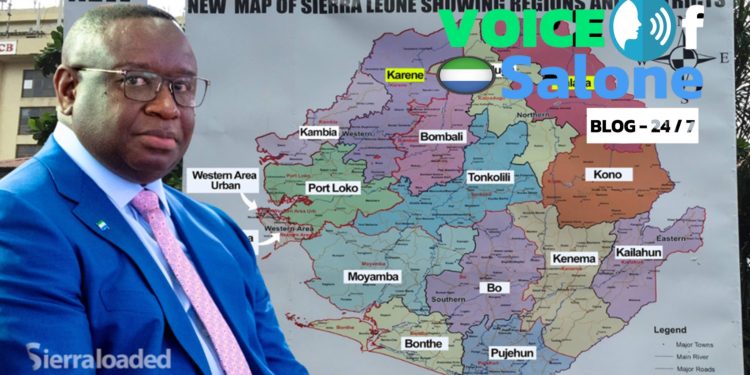By Hassan Osman Kargbo
In a landmark announcement at the Ministry of Information and Civic Education’s ongoing Civic Day Series in Moyamba, the Minister of Local Government and Community Affairs, Hon. Tamba Lamin, revealed that Cabinet has approved the creation of two new districts and the elevation of additional townships to city status, marking a significant step in Sierra Leone’s decentralisation and governance reform agenda.
The two newly approved districts—Bandajuma District and Kpangoma District—will be carved out of existing administrative regions. Bandajuma will be formed from parts of Bo and Pujehun Districts, while Kpangoma will emerge from territories currently within Kenema and Kailahun Districts, reshaping the administrative landscape of the Eastern and Southern Provinces.
The Minister explained that this move is aimed at improving local governance, accelerating service delivery, and promoting inclusive development in rapidly growing or historically underserved areas. “This reform reflects our commitment to bring governance closer to the people and ensure that all regions of Sierra Leone have equitable access to administrative services and infrastructure,” Hon. Lamin stated.
The announcement was met with widespread interest from civic leaders, residents, and local government stakeholders, many of whom see the restructuring as a long-overdue recognition of the distinct socio-economic needs of these regions.
In addition to the creation of the two new districts, Cabinet has approved the elevation of Lungi Township to city status. Located in Port Loko District, Lungi is home to the country’s only international airport and serves as a critical gateway to Sierra Leone. Elevating Lungi to a city acknowledges its strategic economic importance and growing urban character.
This move builds upon previous decentralisation efforts initiated during the administration of former President Ernest Bai Koroma. In 2017, Sierra Leone saw the establishment of Falaba and Karene Districts, carved out from Koinadugu and Bombali Districts respectively. That reform expanded the number of districts to 16 and enabled the creation of the North Western Province, the country’s fifth administrative region.
With the latest proposal, the number of districts in Sierra Leone will rise to 18, pending the successful passage of legislation and execution of necessary administrative procedures. Minister Lamin noted that while Cabinet has given the green light, further consultation, boundary demarcation, and parliamentary approval will follow before the changes are fully implemented.
Stakeholders across the country have already begun weighing in on the implications of the reform. Proponents argue that it will decentralise resources, enhance local representation, and spur regional development. However, some have also called for careful consideration of boundary disputes, resource allocation, and transitional governance structures to avoid administrative overlaps or local tension.
Minister Lamin assured citizens that the government is mindful of these challenges and committed to a transparent, consultative process. “This is not just about drawing new lines on a map—it’s about strengthening governance, promoting inclusion, and building a more responsive state,” he said.
As Sierra Leone prepares for these transformative changes, attention will now turn to Parliament and the Ministry of Planning and Economic Development to oversee the legislative and operational roll-out of the new administrative units.
The move is being hailed as a milestone in Sierra Leone’s governance journey, promising a more equitable distribution of state resources and enhanced participation of communities in shaping their own development paths.












